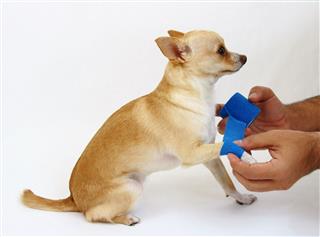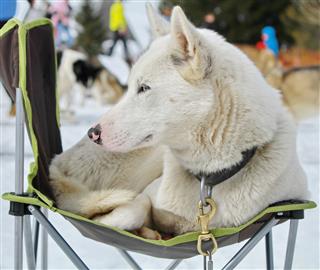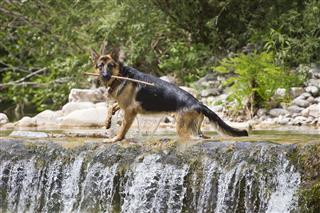
A dog leg injury ranges from being a mild sprain to a severe fracture. Identifying the symptoms and providing proper medical care can help relieve your dog from the pain caused by these injuries. Here is a list of some common causes, symptoms and the treatment options for the various dog leg injuries.
Injuries to a dog can be distressing not only for the pet but also for the dog owner. Canine or dog leg injuries are one of the most common traumatic injuries in dogs. As a matter of fact, it does not really take much to injure a dog’s leg. Everyday activities like running and sprinting around can result in cuts, sprains, torn ligaments and even broken bones in your pet.
It is vital that as soon as you identify the symptoms of a leg injury in a dog, immediate assistance by your veterinarian should be solicited who can advise the appropriate dog care. This can help find the causes of the injuries which range from mild and benign to severe and life-threatening. However, in the absence of immediate care even the mildest of the injuries can become critical to the dog’s health.
Causes of Dog Leg Injuries
Leg injuries in dogs can be attributed to the injuries on the skin, muscles, ligaments, tendons and bones or even a hurt paw. When you visit the vet make sure that you pay attention to what his prescriptive medical aid and precautions that need to be administered to avert such leg injuries in the future.
Dog Paw Injuries: The pads on the bottom of a dog’s foot are prone to injury from glass, hot pavements etc. Also, healing can be difficult due to the paw pad’s exposure to bacteria and pressure from standing on the injured foot. If you find the dog limping then inspect its paw for cuts, punctures or swollen areas. If it is injured then the dog will react to the pressure being put on the paw.
If you find a deep cut or a shred of glass embedded in the paw, then you need to go to a veterinarian. Also, paw injuries may be caused when the nails of the dogs are torn or cracked. If you find the nails chipped and bleeding, then the damaged part must be removed either at home or by a veterinarian. Remember that since this type of injury is likely to become infected, an antibiotic treatment may be needed.
Canine Ligament Injuries: A serious orthopedic knee injury in the dogs is a ruptured cruciate ligament. When the anterior cruciate ligament (the ligaments that prevent the ends of the femur and tibia from moving back and forth across each other) is torn, the joint becomes unstable. This causes the femur and tibia to move back and forth across each other and puts too much tension on the ligament causing it to tear. The most common reasons for the occurrence of this injury is when the dog slips on a slippery surface, makes a sudden turn while running, or is hit by a car. Also dog obesity can result in too much weight on the knees.
Tendon Tears: Although not as common as ligament injuries, tendon tears or strains can be quite painful for dogs. Tendonitis, or inflammation of the tendon can occasionally occur with excessive running or jumping by the dog.
Muscular Sprains and Strains: One of the common reasons for dog leg injuries are muscular sprains and strains. These are characterized by swelling of the affected area and an inability to move the muscular joint. This is usually caused during rough play or icy, muddy or slippery conditions, that can cause the joint to move in a sharp, unnatural direction, resulting in the ligaments being stretched or torn.
Bone Fractures: When excessive stress is put on the skeletal frame of the legs, it might cause fractures of the bones. There are many types of bone fractures like closed fractures, compound fractures, epiphyseal fracture (when the growth plate is fractured) and a greenstick fracture (bone is cracked).
Symptoms to Detect Leg Injuries
- Limping
- Foot Dragging
- Stiff Gait Pattern (generally associated with arthritis)
- Pain
- Swelling
- Bleeding and Wounds
- Snappy behavior
- Lethargy
Potent Treatment Methods
For treating wounds or in case of a broken nail involving bleeding, the foot must be washed with an anti-bacterial soap. Be very careful while doing so, as it may result in a painful experience for the dog. Be gentle in your movements while you clean the wound. If there are some embedded debris, remove it with a pair of tweezers and then disinfect the wound using an antibiotic ointment.
In case of any fractures or dislocation of the joints, owners should not try to re-align the joint all by themselves. You may unknowingly, end up doing more harm than good. Instead, what you could manage to do, is to splint the dog’s foot and seek immediate veterinary attention. If the condition thrives on neglect, severed arteries, muscular damage and compound fractures can occur, if left unsplinted and untreated. Once the leg is splinted, the foot should be immobilized to prevent further injury.
Remember to consult a veterinarian for further advice. Identifying a dog leg injury and providing appropriate medical care, goes a long way in saving the dog from other serious health problems.
















